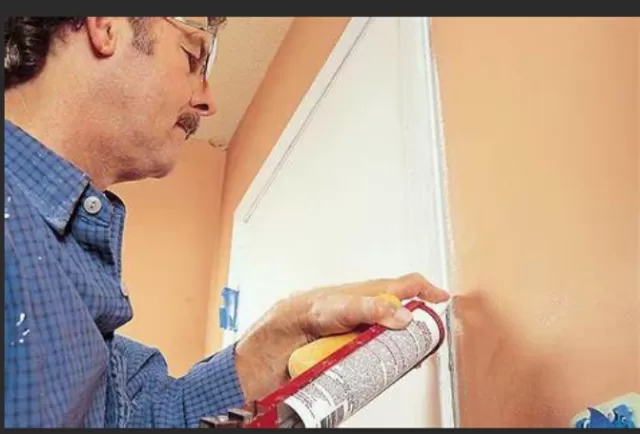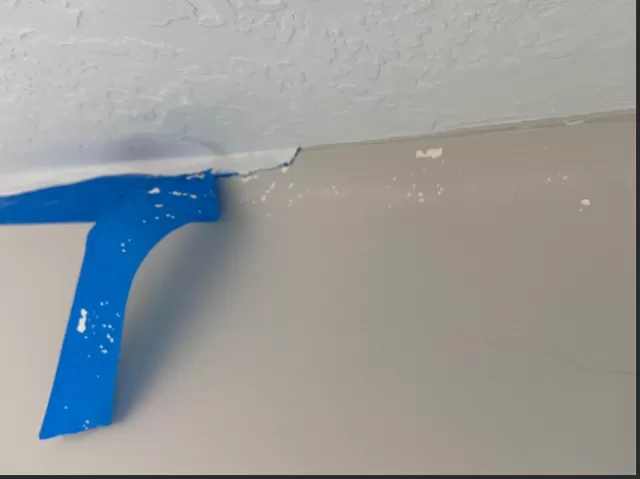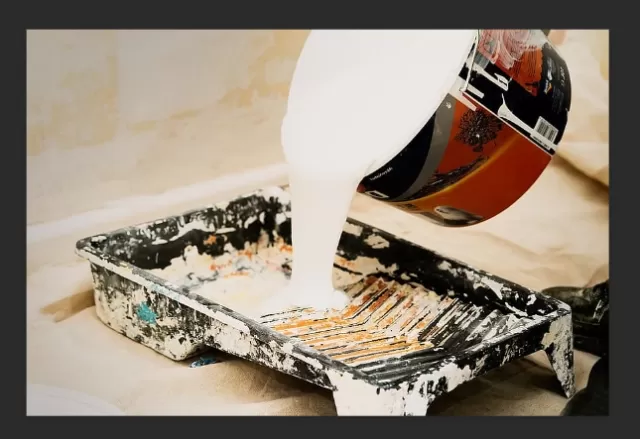Steer Clear of These Common Painting Mistakes.Embarking on a painting project can be a cost-effective way to enhance the overall aesthetic of your home, whether you’re refreshing interior walls or adding a pop of color to an outdoor deck. However, the intended revitalization can turn into a frustration if common painting mistakes are made along the way. From seemingly minor slip-ups like neglecting to clean your walls before starting to more significant errors such as selecting the wrong Paint Color, navigating these pitfalls is crucial for a successful project.
To ensure your painting endeavor breathes life into your space rather than creating unintended complications, it’s essential to be aware of potential missteps. Whether you’re a seasoned DIY enthusiast or a first-time painter, we’re here to guide you through the most common painting mistakes to avoid. Sidestep these pitfalls, and watch as your home undergoes a seamless and transformative makeover.
Avoiding Prep Work: A Common Pitfall in Painting

One of the most prevalent mistakes in the realm of painting is skipping essential prep work, warns Ed Edrosa, senior product manager for Behr.
Neglecting this crucial step can lead to various issues, as Edrosa points out, such as poor adhesion of the paint to the surface and an uneven appearance that may not meet your aesthetic expectations.
To ensure a successful painting project, it’s imperative to dedicate time and effort to thorough preparation.
Edrosa advises covering all floors and furniture, sanding the surface to enhance adhesion, addressing any cracks in the walls, and meticulously scraping away loose paint. These preparatory measures not only pave the way for a smoother painting process but also contribute to a more professional and long-lasting finish.
Don’t underestimate the impact of proper preparation in achieving a flawless and uniform paint application.
By adhering to these preliminary steps, you set the foundation for a visually appealing and durable outcome, transforming your space with a fresh coat of paint that stands the test of time.
Overlooking Wall Cleaning: A Crucial Prep Step for Successful Painting
In the realm of painting, the significance of cleaning walls before applying a fresh coat of paint should not be underestimated.
Annie Sloan, a respected paint and color expert, and the creator of Chalk Paint Annie Sloan, emphasizes the importance of this preparatory step. According to Sloan, warm, Soapy Water is the optimal choice for cleaning walls, as harsh chemicals can damage the paint from the very first application.
The purpose of wall cleaning is clear: to eliminate dust, debris, and dirt that could compromise the adhesion of the new paint and jeopardize the overall finish of the wall in the future.
It’s not just about achieving a visually clean surface; it’s about ensuring a sound foundation for the paint to adhere and bond effectively. By investing time in this essential cleaning process, you mitigate the risk of potential issues and set the stage for a smooth, long-lasting, and flawless paint application.
Incorporate wall cleaning into your painting preparation routine, recognizing it as a fundamental step that contributes to the success and Durability of your paint project.
With a clean canvas, you pave the way for a finish that not only enhances the aesthetic appeal of your space but also upholds its integrity over time.
Essential Precision: The Importance of Painter\’s Tape in Painting Projects

The decision to use painter’s tape may hinge on your level of expertise, but for beginners and seasoned painters alike, it stands as a highly recommended tool.
Ed Edrosa, senior product manager for Behr, underscores the significance of painter’s tape in achieving a polished and professional finish.
“Painter’s tape ensures straight lines, helps prevent overlaps, and may help avoid getting paint on surfaces such as the molding or ceiling,” explains Edrosa.
The application of painter’s tape serves as a safeguard against inadvertent paint splatters and ensures a clean and precise delineation between different surfaces. Its absence in the painting process may lead to unintended overlaps, compromising the crispness of lines and negatively impacting the overall visual appeal of your project.
Whether you’re a novice or an experienced painter, incorporating painter’s tape into your toolkit is a prudent choice.
It acts as a reliable assistant, contributing to the precision and finesse of your work. By taking this simple yet crucial step, you enhance the professional quality of your paint job, achieving clean lines and a finished project that reflects attention to detail and care.
Critical Choice: Selecting the Right Primer for Painting Success
Tim Bosveld, vice president of product management at Dunn-Edwards, emphasizes the pivotal role that primers play in addressing specific surface issues such as staining, efflorescence, alkalinity, and adhesion.
Primers act as specialized coatings designed to prepare surfaces for paint application, ensuring a durable and long-lasting finish.
However, the importance of picking the right primer cannot be overstated.
Choosing an inappropriate primer for the job can have significant consequences on the overall durability and longevity of your painting project. Each surface issue requires a specific type of primer to effectively address and mitigate it.
To ensure the success of your painting endeavor, take the time to understand the unique characteristics of the surfaces you are working with and select a primer that aligns with those needs.
This thoughtful approach to primer selection not only enhances the performance of the paint but also contributes to the overall resilience and quality of the finished project. Prioritize this crucial step to lay the foundation for a successful and enduring paint job.
Primer: A Vital Step for Painting Success

Anthony Kulikowski, owner of Five Star Painting, stresses the importance of using primer in specific cases, such as bold color changes, painting old wood paneling, or addressing surfaces with peeling or loose paint.
Skipping the primer step in these situations can result in Significant Drawbacks, warns Kulikowski.
“Not applying a primer can cause early paint failures, which lead to frustration and more money spent,” he cautions.
Primer serves as the foundation for a successful paint job, addressing issues like adhesion, stain blocking, and providing a uniform surface for the paint to adhere to.
Whether you’re undertaking a dramatic color change or dealing with challenging surfaces, investing the time and effort into applying primer is a prudent choice.
It not only enhances the longevity of the paint job but also ensures a smoother, more professional finish. Don’t overlook the pivotal role of primer in achieving painting success and avoiding potential issues that may arise when this crucial step is omitted.
*The information is for reference only.